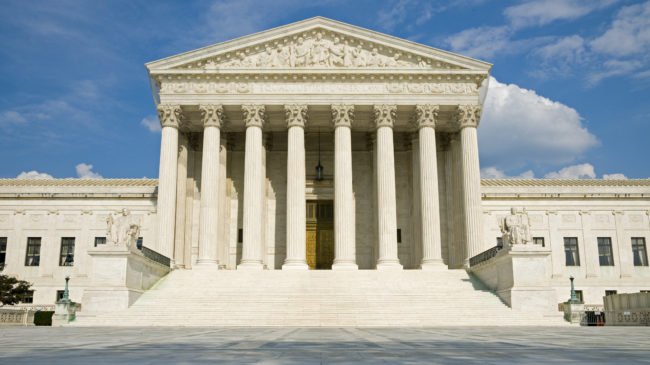The Supreme Court delivered a landmark victory for parents, students, and advocates of religious freedom alike on Tuesday by striking down a Montana law that prevented a private school tax credit scholarship program from including religious schools. The decision has the potential to neutralize the “Blaine Amendments” found in more than 30 state constitutions that restrict the participation of religiously affiliated schools in publicly funded education choice programs.
The Montana Supreme Court previously blocked religious schools from the program because it claimed it violated the Montana Constitution’s Blaine Amendment. However, the Supreme Court, by a 5-4 majority, overturned Montana’s decision on the grounds that it contradicted the U.S. Constitution’s free exercise of religion clause. This may be a win for religious institutions, but it’s definitely a win for school choice, which has been shown to boost outcomes in secular public schools.
Proponents of Blaine Amendments argue that public funding should not go toward religious institutions since this violates the separation of church and state. However, this is a misnomer. Funds or vouchers earmarked for school choice programs are awarded to parents, not schools. Parents are then free to take the funding to schools of their choice. Arguments about funding religious institutions are rightly never raised when food stamp recipients spend these at Christian co-ops, when Pell Grant scholarships are spent at religiously affiliated universities, or when Medicaid funds go to religiously affiliated hospitals. There’s no reason why schooling should be treated differently.
Historical context also puts the idea that Blaine Amendments are about preserving secularism to bed. The amendment’s origins lie in a failed attempt to alter the U.S. Constitution in the 1800s. At a time of high anti-Catholic sentiment, primarily Protestant politicians sought to prohibit state aid for religious schools, especially those tied to the Catholic Church. While President Ulysses S. Grant justified this stance on the grounds that public education should be free from any denominational or sectarian influence, these events played out a time when most U.S. public schools practiced Protestant prayer and taught from a Protestant Bible — in other words, government-run schools were anything but secular in the modern sense. Although the Blaine Amendment failed at the federal level, the amendments were later wholly or partially incorporated into many state constitutions.
Wealthy families have always had the means to exercise school choice by moving into the affluent neighborhoods offering good public schools or by paying for private education. School choice vouchers, then, overwhelmingly benefit low- and middle-income families who may be assigned to low-performing schools or ones that are not the best fit for their children, based only on ZIP code. School choice is especially popular among minorities, including black people and Latinos.
As the COVID-19 health crisis and recession have decimated state budgets and deprived some children of the equivalent of an entire year of schooling, school choice programs that not only give families more options but do so at a fraction of the cost of public schooling should be embraced. Expanding the options available to these families under existing state programs by nullifying Blaine Amendments is a victory.
It’s not about endorsing or supporting religious institutions. It’s about equal educational choice for all. In the words of the Supreme Court majority, “A state need not subsidize private education. But once a state decides to do so, it cannot disqualify some private schools solely because they are religious.”
A version of this column first appeared in the Washington Examiner.

